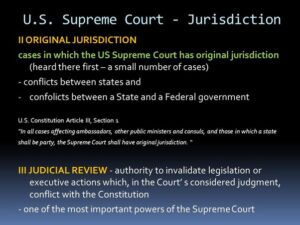Garnishment
Garnishment is a legal process that allows creditors to seize assets like wages or bank funds to repay an outstanding debt that is owed. It serves as one option creditors have to collect on debts that have gone unpaid for an extended period. However, there are federal and state laws in place to protect debtors and set rules for a lawful garnishment process.
What is Garnishment?
A garnishment refers to a court order requiring a third party to turn over assets belonging to a debtor to repay a creditor. Typically, the assets garnished are wages from the debtor’s employer or funds from the debtor’s bank account. Other parties like rental income sources or clients owing money to a business can also receive garnishment orders. The assets are legally frozen upon receipt of the order and directly funneled to the creditor upon release by the court.
Types of Garnishment
There are a few key types of assets commonly subject to garnishment. The specifics depend on federal and state laws.
Wage Garnishment
A wage garnishment occurs when a creditor contacts a debtor’s employer ordering them to withhold a portion of the person’s wages to repay a debt. Federal law sets limits, such as restricting wage garnishments to 25% of disposable earnings or preventing the employee’s net wages from dropping below minimum wage.
Bank Account Garnishment
A bank account garnishment happens when a creditor obtains a court order to freeze funds in the debtor’s checking, savings or other bank accounts. The financial institution must hold those assets until the court determines eligibility and usage to repay outstanding debt. State law determines the percentage of funds protected from garnishment.
Who Can Garnish Assets?
There are specific entities legally able to move forward with asset seizure under garnishment laws:
Creditors
A creditor is any individual or company to which a debtor owes money. Common creditors utilizing garnishment include credit card issuers, medical providers, telecommunications companies, utilities, and lenders. If voluntary repayment stops, they can take legal action for garnishment.
Government Agencies
If an individual owes back taxes or other government fees like child support or alimony, government agencies can garnish. For example, the Internal Revenue Service may garnish wages or seize tax refund dollars.
Child Support Enforcement
Child support collection departments work on recovering overdue support payments. Like other creditors, they can have wages or bank accounts garnished with appropriate legal orders.
Garnishment Process
The asset garnishment process follows distinctive legal steps before any money changes hands.
Notice of Intent to Garnish
The first step a creditor must take to pursue garnishment is having a notice delivered stating their intent to garnish assets and the debt details. Mailed notice gives the debtor awareness so they may act to prevent asset seizure through repayment arrangements.
**Hearing **
The notified party can request a hearing to challenge the validity of the debt or the creditor’s right to garnish. If no hearing is sought, the process moves forward. These hearings give the debtor a chance to explain special circumstances.
Order of Garnishment
Assuming compliance with notification policies and no reversal at hearing, the court will issue an order of garnishment. This legally requires the named third party to redirect specified assets to debt repayment once released.
Frozen Assets
Upon receiving a garnishment order, banks, employers, or other third parties must immediately freeze those assets from use or sale. This prevents the debtor from withdrawing or redirecting funds to avoid payment.
Debt Payment
Finally, the garnished wages or bank deposits get released according to court order for payment to the creditor. A processing fee may be deducted, with the balance going to repay the overdue debt.
Protection from Garnishment
There are legal safeguards in place to prevent asset seizure in specific situations of hardship.
Federal Benefits
Federal laws protect certain assistance funds from creditors. For example, Social Security, SSI, VA and federal student loan funds cannot be garnished through typical state court orders.
State Laws
Individual states have garnishment laws shielding some assets. For example, states define minimum bank account balances exempt from seizure, or minimum wage levels needing protection from creditor wage garnishment orders.
Exempt Property
Debtors can also seek protection of assets deemed legally exempt from garnishment under federal or state laws. This may include primary vehicles, basic household goods, tools of the trade, and a basic homestead, among others.
Fighting Back against Garnishment
For those facing damaging asset seizure through a legal garnishment, options exist to resist the loss.
Proving Hardship
The first step is requesting a hardship hearing where the debtor explains how asset seizure would prevent meeting basic living needs. Supporting evidence like budgets and medical bills can show valid hardship worthy of protection.
Filing Bankruptcy
Seeking the legal protection of bankruptcy court stops collections and garnishment in their tracks through automatic stay orders. Chapter 7 or Chapter 13 bankruptcy arranges alternative debt repayment plans or discharge of certain debts altogether.
Paying the Debt
Finally, the debtor can agree to repay the creditor through a payment plan or via borrowed funds. Bringing an account current ends garnishment eligibility against that creditor. This must happen timely enough to prevent court ordered seizure of assets.
Conclusion
Recap on Garnishment
In review, garnishment is a potent collections tool allowing seizure of assets like wages and bank funds to repay unpaid debt. Federal and state laws govern the garnishment process while also setting exemptions for protected income sources. Debtors have options to challenge garnishment through hearings and bankruptcy protection. But ultimately, the most direct path to end garnishment is through debt repayment or proof of unmanageable hardship worthy of exemption.
Key Takeaways
- Creditors utilize court ordered garnishment to seize assets and repay debts
- Wages and bank funds are common garnishment targets
- Debtors can challenge garnishments in court or file for bankruptcy protection
- Repayment agreements and qualifying hardships can also end garnishment eligibility
FAQs
Can I lose my home or car to a creditor?
In most cases, state laws protect a portion of home equity and vehicles from unsecured creditor garnishment provided the items were not put up as collateral for the loan. If you default on secured debts like auto loans or mortgages, repossession is possible.
Do I get a warning before garnishment?
Yes, federal law requires creditors to mail notices of intent to pursue garnishment providing time for you to act. However, if action isn’t taken by a specified date, the court ordered seizure can proceed without additional warning.
Is my full bank balance at risk if garnished?
State exemptions require creditors to bypass garnishing a protected minimum balance, such as $500. But funds over state defined thresholds can get seized through bank account garnishment orders.
Can creditors garnish federal or state tax refunds?
Federal and state government agencies have priority garnishment rights regarding debt owed directly to them. If you owe federal taxes, the IRS can seize all or part of any refund. Similarly, many states allow garnishment of tax refunds for back taxes or overpaid benefits.
Who pays the processing fees on a garnishment?
While practices vary, often state laws allow creditors that win a garnishment judgment to add processing fees to the amount owed by the debtor. That cost gets deducted from funds released, which increases hardship to those already in financial distress.







